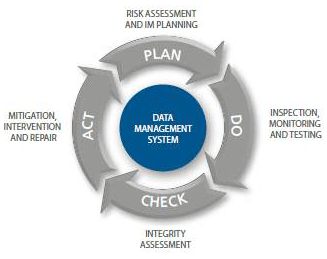Last week, several of Entrance’s software consultants attended PNEC’s 17th Annual Conference, “Petroleum Data Driven Decisions for Higher Returns.” There were a number of interesting sessions covering how oil and gas companies can use data management to improve their bottom line. Entrance will cover a few of them over the next few weeks.
In “Data Management Gangnam Style: Best Practices in a Seismic Validation Project in SE Asia,” Jess Kozman, SEA Regional Manager at Mubadala Petroleum, shared some interesting hands-on insight about implementing data management. He shared how the management team at Mubadala had some pretty big goals for company growth. His team was charged with coming up with a support plan for the accompanying exponential growth in data. As Kozman put it, the big question was, “Who is going to support all that data?”
As Kozman’s team got into the project, one of the big problems that came up right away was a lack of any kind of standardization amongst the data. In addition, as he talked to users, it became apparent that a lack of confidence in the data was a problem. It also was not possible to do a complete look-back of the full-process history for a given well.
 Mubadala took this feedback and used a number of tools, including SharePoint and Google Earth, to surface all company data, with the goal of “delivery it across multiple platforms,” for maximum accessibility. Kozman established a common naming convention based on how the team talked about seismic surveys, which eliminated confusion and made finding data again much simpler.
Mubadala took this feedback and used a number of tools, including SharePoint and Google Earth, to surface all company data, with the goal of “delivery it across multiple platforms,” for maximum accessibility. Kozman established a common naming convention based on how the team talked about seismic surveys, which eliminated confusion and made finding data again much simpler.
Two big pieces of advice about this kind of project that Kozman shared with the audience are worth mentioning:
- Always consult the user base. They know what they need and how they use the software.
- Don’t implement a solution that management won’t enforce.
Now that Mubadala’s solution is in place, Kozman has had many opportunities to “make the value of data management visible,” which he says is an important goal for anyone looking to champion data management at their workplace.
As a specific example, he shared how a new structural geologist needed a set of surveys that Mubadala had a high level of confidence in. Before this project, it would have taken three weeks to track down the correct surveys. He had his answer within 48 hours, which Kozman says is a 98.9% reduction in decision latency.
For more, read our director of consulting’s take on how Six Sigma strategies can improve data management.

